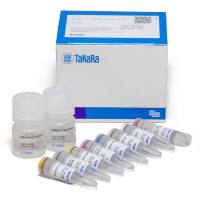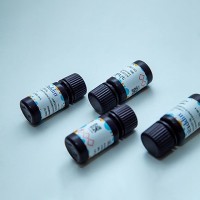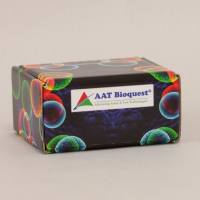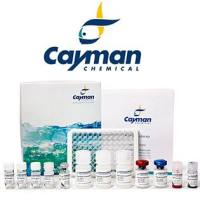Screening Colonies by Hybridization with Radiolabeled Probe
互联网
Screening Colonies by Hybridization with Radiolabeled Probe
-
Lysis of Colonies and Binding of DNA to Nitrocellulose Filters
-
Labeling of DNA-Probe with 32 P
-
Hybridization to Nitrocellulose Filters Containing Replicas of Bacterial Colonies
1. Lysis of Colonies and Binding of DNA to Nitrocellulose Filters
Outline
Lifting colonies from agar plates onto nitrocellulose membranes, lyse cells, neutralize and bake them with the final result of having the bacterial DNA fixed to the membranes, ready for hybridization.
Supplies & Equipment:
- 4 Cafeteria trays
- 5 pieces of Whatman 3MM paper (tray size)
- n + 1 pieces of Whatman 3 MM paper (square, nitrocellulose filter size)
- nitrocellulose filters (petri dish size, usually Ø82mm)
- vacuum oven (80°C)
- Eppendorf tube with black ink, needle stuck through lid
Reagents:
- 10% SDS (optional)
- (dissolve 50 g SDS in 500 ml dH2 O)
- Denaturing solution (0.5 N NaOH, 1.5 M NaCl)
- (dissolve 43.83 g NaCl in 300 ml dH2 O, add 50 ml 10 N NaOH stock solution , dH2 O ad 500 ml)
- Neutralizing solution (1.5 M NaCl, 0.5 M Tris ・ Cl [pH 7.4])
- (100 ml dH2 O, add 250 ml 1 M Tris ・ Cl [pH 7.4] stock solution, dissolve 43.83 g NaCl, dH2 O ad 500 ml)
- 2 x SSC
- (50 ml of 20 x SSC stock solution , dH2 O ad 500 ml)
Procedure:
- Turn on the vacuum oven.
- Cut 4 pieces of Whatman 3 MM paper to tray size. Saturate every tray with one of the above listed solutions. Roll out air bubbles with (e.g.) pipet. Pour off excess liquid.
- Label nitrocellulose filters with soft pencil and place them dry on agar plates. Mark the orientation by puncturing filters into the agar with the black ink needle (1 spot at 12:00, 2 spots at 04:00, 3 spots at 08:00). The black ink will simultaneously stain the nitrocellulose filter and the agar plate.
- Using blunt ended forceps, peel filters from their plates and place them, colony side up, for 3 minutes on the SDS -impregnated 3MM paper.
- Transfer for 5 minutes onto denaturing solution , using the edge of the first tray to remove excess liquid.
- Transfer for 5 minutes onto neutralizing solution.
- Transfer for 5 minutes onto 2 x SSC.
- Transfer onto a dry sheet of 3MM paper, let air dry for at least 30 minutes at room temperature.
- Sandwich the filters between sheets of 3MM paper. Fix the DNA to the filters by baking for 1 -2 hours at 80°C in a vacuum oven.
- Any filters not used immediatley in hybridization reaction should be wrapped loosely in aluminum foil and stored at room temperature.
Time Required: 2 - 3 hours
2. Labeling of DNA-Probe with 32 P
Outline:
Using DNA polymerase, templates, and primers in combination with radiolabeled nucleotide (either [a -32 P]dATP or [a -32 P]dCTP), a radioactive probe is synthesized. The procedure works with either exact size templates and any (random or specific) primers or with templates within a vector and specific primers.
Supplies & Equipment:
Reagents:
Procedure:
-
Add to the bottom of a microfuge tube:
- 25 ng (1-23 µl) of template DNA
- 0-23 µl dH2 O
- 10 µl primer (either random oligonucleotide primers from kit or specific primers (diluted: 10 µM or 10 ng / µl) from PCR or sequencing)
- Boil reaction tube in water bath for 5 minutes, then centrifuge briefly at room temperature to collect condensed liquid from cap of tube.
-
Add the following reagents to the reaction tube:
- 10 µl of 5 x primer buffer (either 5 x *dATP or 5 x *dCTP buffer)
- 5 µl of labeled nucleotide (either [a -32 P]dATP) or [a -32 P]dCTP)
- 1 µl Exo(-) Klenow enzyme (5 U/µl)
- Mix the reaction components thoroughly with pipet tip.
- Incubate the reaction at 37 - 40°C for 2 - 10 minutes.
- Stop the reaction by adding 2 µl of stop mix.
-
Purify probe with either one of the following kits:
- NucTrap® Probe Purification Push Columns (Stratagene #400701), for DNA- or RNA-probes 17 bp - 50 kb
- Qiaquick PCR Purification Kit (Qiagen #2804) for DNA-probes 100 bp - 10 kb
- Count radioactivity of probe. Take 1 µl probe, dilute with appropriate amount of scintillation fluid, use same amount of scintillation fluid as negative control. Count. You should have ~106 cpm per ml hybridization reaction (~ 15 million cpm per hyb).
- Boil probe 5 min. immediately before use.
Time Required: 30 minutes
3. Hybridization to Nitrocellulose Filters Containing Replicas of Bacterial Colonies
Outline
After the DNA has been fixed to the filters by baking, the following steps take place in hybridization bottles and hybridization oven. Following a wash step, bacterial debris is wiped mechanically off the filter surface. Filters then are prehybridized to block binding sites, and the radiolabeled probe added thereafter will compete for specific binding sites. After washing, the air died filters are exposed to an X-ray film which shows positive colonies..
Supplies & Equipment:
- Hybridization oven
- Hybridization bottles
- Nylon mesh pieces
- Waterbath at 100°C
- Kimwipes
Reagents:
-
Prewashing solution , 50 ml per bottle, (5 x SSC, 0.5% SDS, 1 mM EDTA pH 8.0)
- for 50 ml: 12.5 ml 20 x SSC Stock , 2.5 ml 10% SDS Stock , 100 µl 0.5 M EDTA pH 8.5 Stock , 34.9 ml dH2 O
- for 200 ml: 50 ml 20 x SSC Stock, 10 ml 10% SDS Stock, 400 µl 0.5 M EDTA pH 8.5 Stock, 139.6 ml dH2 O
-
either: Prehybridization solution with formamide (for 42°C) , 15 ml per bottle, (50% deionized formamide, 6 x SSC, 0.05 x BLOTTO)
- for 15 ml: 7.5 ml formamide, 4.5 ml 20 x SSC stock, 750 µl 1 x BLOTTO , 2.25 ml dH2 O
- for 30 ml: 15 ml formamide, 9 ml 20 x SSC stock, 1.5 ml 1 x BLOTTO, 4.5 ml dH2 O
- for 100 ml: 50 ml formamide, 30 ml 20 x SSC stock, 5 ml 1 x BLOTTO, 15 ml dH2 O
-
or: Prehybridization solution (for 68°C) , 15 ml per bottle, (6 x SSC, 0.05 x BLOTTO)
- for 15 ml: 4.5 ml 20 x SSC stock, 750 µl 1 x BLOTTO, 9.75 ml dH2 O
- for 30 ml: 9 ml 20 x SSC stock, 1.5 ml 1 x BLOTTO, 19.5 ml dH2 O
- for 100 ml: 30 ml 20 x SSC stock, 5 ml 1 x BLOTTO, 65 ml dH2 O
-
32 P-labeled probe (~ 1 mio cpm per ml prehybridization solution)
- Wash solution 1 (2 x SSC and 0.1% SDS)
- Wash solution 2 (1 x SSC and 0.1% SDS)
-
- Wash solution 3 - optional (0.2 x SSC and 0.1% SDS)
Procedure:
- Float the baked filters on the surface of a tray of 2 x SSC until they have become thoroughly wetted from beneath. Submerge the filters for 5 minutes .
-
Sandwich the filters between pieces of nylon mesh (up to 8 per bottle)
Roll stack of mesh and filters in the way shown in the picture. Add 50 ml prewash solution per bottle. Place bottle with lid on right side into hybridization oven. Prewash at 50°C for 30 minutes. 
- Using Kimwipes, gently wipe bacterial debris from the surface of the filters. Rinse filters in 2 x SSC and wash nylon mesh and bottles with water to remove SDS. Sandwich again and place in bottles as decriebed above.
- Add 15 ml prewarmed prehybridization solution per bottle (42°C with formamide, 68°C without formamide). Prehybridize for 1 - 2 hours.
- Boil probe for 5 minutes. Make sure the cap of the tube is secured to avoid radioactive spill when tube pops open due to heat expansion! Spin down down shortly to condensated liquid from cap. Add probe to hybridization bottle.
- Hybridize overnight at either 42°C or 68°C.
- When the hybridization is completed, pour off the hybridization solution and add 50 ml of wash solution 1. Wash for 15 minutes at 68°C (42°C also possible).
- Wash two times with 50 ml of wash solution 2 at 68°C for 1 - 1.5 hours.
- optional: Wash once in wash solution 3 at 68°C for 1 hour. Only necessary if high background demands washing at high stringency.
- Dry the filters on paper towels at room temperature. Fix filters (colony side up) with tape on film cassette-size piece of filter paper. Help later orientation with fluorescent marker pen. Cover with Saran Wrap. Expose in cassette at -80°C for 2 hours. Expose again longer if needed.







